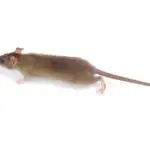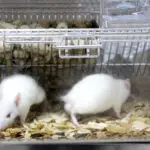How Small Are Rats’ Cracks?
Rats can squeeze through cracks up to a diameter of seven millimeters, but they need to be very small to do so. Rats’ skeleton is designed to allow them to fit through small spaces, similar to that of a ferret or eel. Their long torso and narrow shoulders, along with their pointed head, enable them to push themselves through small holes.
Rats can squeeze through a variety of cracks and holes as long as the hole is just the right shape and size. The width of a rat’s hole will vary depending on how it is shaped, what it is made of, and the substrate on which it is made. The age of a rat is also an important factor, as juveniles can squeeze through smaller openings than adult rats.
Rats’ skeletal system is made up of cartilage and joints, which allow them to squeeze through small holes. However, this does not mean that they have collapsible bones, as some myths suggest. Although a rat’s skeleton is not as flexible as an eel’s, it is still nimble enough to squeeze through cracks and holes to get into buildings.
Rats can squeeze through small holes, as small as a quarter-inch, and they can enter your house through the roof and walls. For prevention, seal up any cracks or holes around your house with caulk or waterproof sealant. Another way to prevent rats from entering your home is to prevent them from finding food sources inside. Many people discover the presence of rats when they hear them in walls or attics. Sometimes they will even chew on pipes or electrical wiring. Once inside, rats may also raid your food storage areas.








